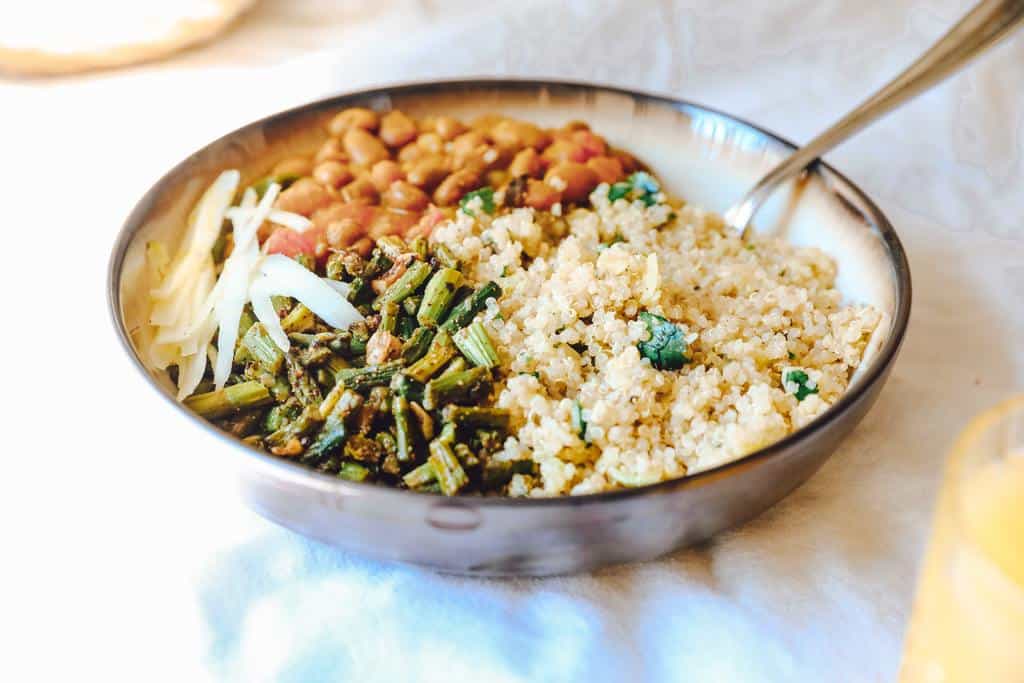 Iron is another necessary nutrient for good health. But since nobody really talks much about this mineral (or any others!) we often don’t know it’s an issue until it causes iron-deficiency anemia. Low iron affects our energy levels by causing fatigue and weakness. But there are more symptoms you should also be aware of.
Iron is another necessary nutrient for good health. But since nobody really talks much about this mineral (or any others!) we often don’t know it’s an issue until it causes iron-deficiency anemia. Low iron affects our energy levels by causing fatigue and weakness. But there are more symptoms you should also be aware of.
According to the Cleveland Clinic, “anemia is the most common blood condition” in the U.S. affecting around 3 million Americans. It’s seen in women more often due in part to menstruation or pregnancy. But it’s also seen in older adults who are on blood thinners (including aspirin) and also may not be eating a balanced diet.
In older adults, anemia can have more serious complications if left untreated, like depression, confusion and even early death. Another complication is that older adults can be asymptomatic. This is just one more reason to pay attention to what we’re eating so we can prevent problems from happening in the first place.
So let’s take a quick look at how iron affects our health.
Why do we need iron?
Iron is a mineral that our bodies need for growth and energy, especially during growth spurts (as children). Our bodies use iron to make hemoglobin and myoglobin, which are proteins in our red blood cells that carry oxygen to our organs and muscles. Without enough iron, we end up feeling tired and weak.
Low iron levels eventually lead to iron-deficiency anemia. This is actually quite common in premenopausal women, pregnant women, vegetarians or vegans, and people over age 65. But it’s also common with certain chronic diseases like Rheumatoid Arthritis, inflammatory bowel disease, and some cancers.
Iron also helps our bodies to make certain hormones and it helps our immune systems to function better. So it’s important to make sure we get what we need.
Where do we get iron from?
Iron is most easily obtained from eating certain animal products. But you can also get it from a number of plant sources. Here’s a list of the foods with the highest amounts of iron from both animal and plant sources.
-
- clams, oysters and mussels
- organ meats like liver, kidneys, brain and heart
- red meats, poultry and fish (tuna or sardines)
- spinach and other leafy greens
- legumes (beans, lentils, chickpeas, peas and soybeans)
- pumpkin seeds
- quinoa
- broccoli
- tofu
- dark chocolate (at least 70% cacao)
- dried fruits (raisins, dates, figs and prunes)
Improving absorption of iron
One thing to note is that our bodies can’t absorb the iron from plant sources as well as it can from animal sources. So if you’re not eating very many animal products there is a trick to absorbing more iron from plants. If you ingest some Vitamin C along with iron-rich foods it will help to increase absorption.
So just eat a fruit along with your quinoa or leafy greens and that will help your body to absorb more iron from them. We all need to eat more fruits anyway! If you want more information on that go to The Vegan Society for a short article and a list of iron-rich foods to eat.
Variety is key
Whether you’re a meat-eater or not, it’s important to eat a natural diet and a big variety of foods. That way you’re more likely to get all the nutrients your body needs. As people get older they tend to eat less variety and stick to only the foods they’re already familiar with.
Work on this by making it a game to see how many new fruits and veggies you can try each month. And make it more interesting by trying them in different ways; eat them raw, cook them on a grill, or bake them.
Related article: Are you getting enough nutrients for good health?
Symptoms of low iron levels
People with iron-deficiency anemia complain of a variety of symptoms including:
-
- fatigue and weakness
- lightheadedness and shortness of breath
- irregular heartbeat or chest pain
- intolerance to cold
- headaches
- pale skin and brittle nails
- hair loss
- Restless Leg Syndrome
Scientists now know that Restless Leg Syndrome is associated with an iron deficiency or insufficiency in the brain. However, brain levels of iron can be low even when blood tests show that all the other organs of the body have normal levels.
In other words, if you’re tested for anemia and everything looks fine you might still be too low. And the severity of Restless Leg Syndrome is dependent on just how low those levels are. There is no cure for RLS but there are treatments that can help. So talk to a doctor about it if it affects you.
There are several other types of anemia caused by different things that you should also know about. Mayoclinic.org has a list of them and their causes if you’re interested in reading more.
Can we get too much iron?
A genetic condition called Hemochromatosis is a disease in which a body absorbs too much iron from food. This can’t be prevented but there is a treatment for it. It’s also possible to get too much iron from your diet or from supplements. So don’t take supplements unless your doctor tells you that you need them.
Research has shown that cooking in a cast-iron skillet can also cause us to absorb too much iron. The only way to get rid of iron in the body is through blood loss. So this tends to be a bigger problem for men and post-menopausal women.
Here are some of the signs and symptoms of too much iron. And you’ll notice that they are some of the same signs of too little iron in the body.
-
- fatigue or weakness in the joints or muscles
- shortness of breath
- gastrointestinal pain or nausea
- unexplained weight loss
- loss of sex drive or early menopause
- impotence
- elevated liver enzymes
- hair loss
Motivation for health and fitness
My job is all about health and fitness so I think it’s important to understand how different nutrients affect our bodies. Since iron affects our energy levels that also means it affects our activity levels. We all want to have the motivation to work out and make healthy eating choices but that’s difficult if we’re anemic and tired all the time.
Sometimes motivation is just psychological, but not always. If you’re feeling low on energy and have some of the other symptoms listed above then it’s a good idea to talk to a doctor.
We need to fuel our bodies with the right nutrients first in order to get the physical energy we need. Then we can work on mental motivation and strategies that can also help. Whether you’re a meat-eater or not, it’s not hard to get enough iron if you’re paying attention to eating a balanced diet.
Related article: 10 Motivational tools to maintain weight loss and health.
My final thoughts
Doctors don’t always know what specific pieces of information to bring up to their patients. They don’t know if you’re cooking with an iron skillet or eating a healthy diet. They may not always be able to put two and two together to know there’s a problem. And they’re too busy to ask a hundred questions just because!
This is why it’s our job to educate ourselves so we know what to talk about and ask when we see them. If you’ve had some of the symptoms listed above for low iron then ask your doctor about getting your levels tested to be sure. Then you can take steps to fix the problem if necessary.
It’s so important to pay attention to our own bodies and make sure we’re fueling them in the best way possible. Iron affects our energy levels in some very negative ways so getting it right can have a big impact on the quality of our lives.

